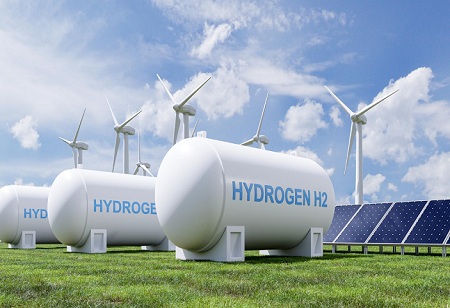
Green hydrogen could be the solution to the steel industry's decarbonisation challenge, according to a report titled "India Steel 2023 Amrit Kaal journey: Facilitating the Indian growth story". The report states that the steel sector emissions contribute 12% of the total CO2 in the country, with every tonne of steel produced in India emitting 2.55 tonne of CO2 against a global average of 1.85 tonne. The report comes at a time when India's steel industry, responsible for approximately 240 million tonnes of carbon emissions annually, is expected to see this figure double by 2030 due to the Indian government's ambitious infrastructure development targets. It emphasises the urgency for steel producers to adopt strategies for decarbonisation.
The government has identified green hydrogen-based Direct Reduction Iron (DRI) as the most effective alternative to traditional steelmaking methods that rely on fossil fuels, primarily coal and natural gas. Use of hydrogen in steelmaking can not only improve energy efficiency but also reduce operating costs and enhance the quality of the steel produced. Industry experts in the report suggest that replacing fossil fuels with hydrogen in the DRI process can reduce emissions by up to 90%. The Government's National Green Hydrogen Mission aims to capitalise on this potential by promoting the development of hydrogen infrastructure. On January 4, 2023, the Union Cabinet approved an outlay of 19,744 crore for the mission from FY 2023-24 to FY 2029-30. The mission aims to position India as a global hub for the production, usage, and export of green hydrogen and its derivatives.
According to industry estimates, the viability of hydrogen technology for expansion depends on achieving a price point of around $1-2/kg and imposing a carbon penalty of at least $50 per tonne of emissions on steel manufactured through traditional methods. These factors could make green steel competitive and catalyse a 150 million tonne shift from coal-based to hydrogen-based steelmaking.
Current international standards state that an average of 1.8 to 1.9 tonnes of CO2 is generated per tonne of crude steel produced, with the Indian average ranging from 2.26 T/tcs to 2.8 T/tcs of CO2. The demand for green steel is expected to rise in the coming decades, making energy efficiency and decarbonisation two key focuses for the steel industry, both in India and globally.
We use cookies to ensure you get the best experience on our website. Read more...